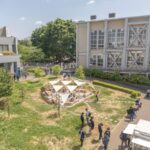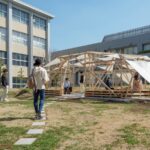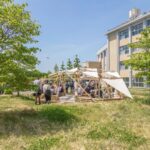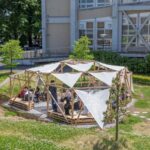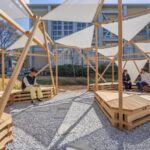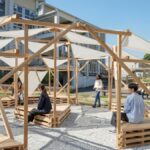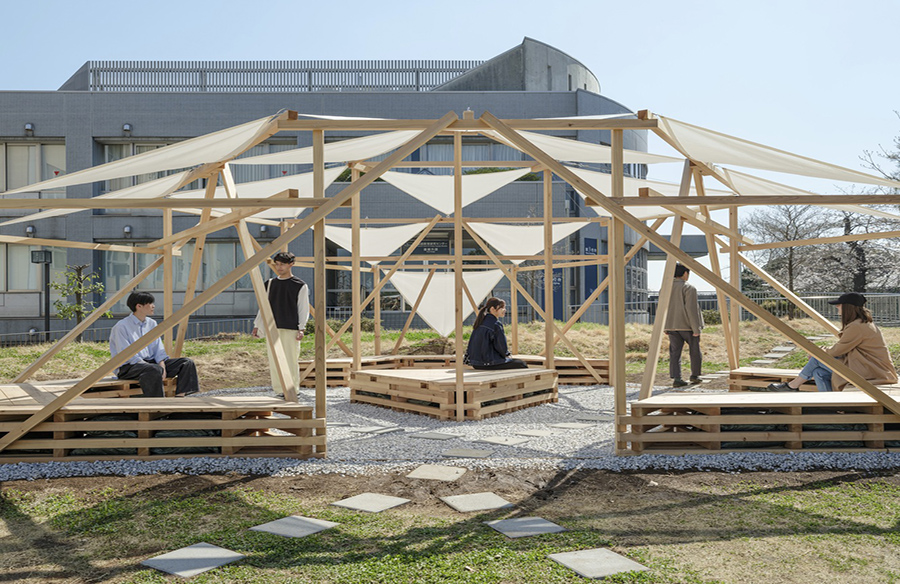
In Yokohama, Japan, architects Jorge Almazán and Keio University Studiolab collaborated on a temporary pavilion project aimed at fostering informal social interactions among students at Keio University’s Hiyoshi Campus. The project, completed in 2023, was a response to the decline in face-to-face interactions among students during the pandemic years, which adversely affected motivation, academic performance, and mental well-being.

Maximizing Underutilized Space
The pavilion was erected on the former site of the 5th building, which had been demolished in 2011, leaving the area largely underutilized despite occasional use as a gathering spot for students. Recognizing its potential as a social hub, the architects devised a cost-effective, small-scale wooden pavilion to enhance the site’s appeal and encourage interaction.
Design Concept and Implementation
The pavilion features four benches arranged to facilitate social interaction, with wooden frames supporting triangular mesh fabrics that provide shade and allow airflow. To ensure stability in the face of Japan’s strong winds and typhoons, bags filled with pebbles were concealed under the benches, serving as a foundation without the need for extensive groundwork.
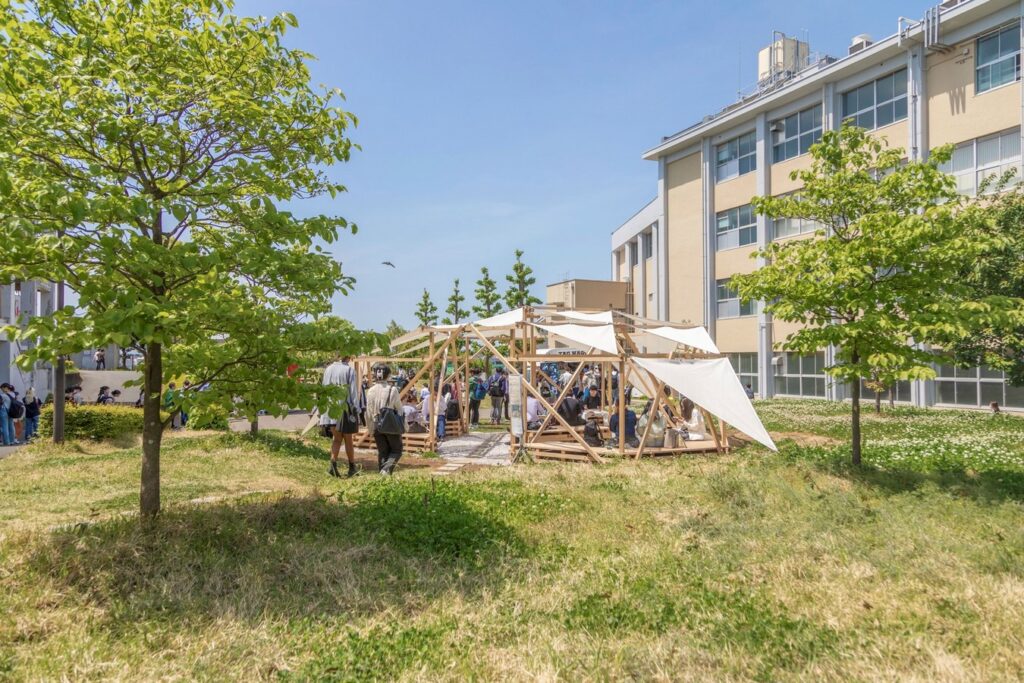
Participatory Construction Approach
A key aspect of the project was the active involvement of students in all phases, from design to construction. Under the guidance of a professional builder, students assembled the pavilion over 12 days using locally sourced Japanese cedar wood and simple construction techniques. The design’s simplicity minimized the need for specialized skills, enabling students with no prior experience to contribute effectively.
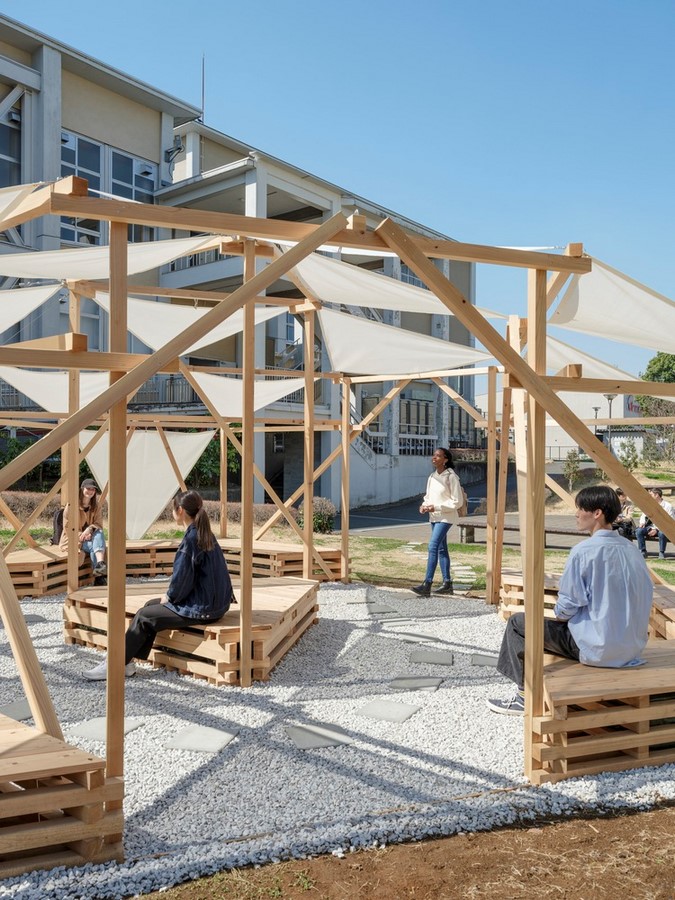
Impact and Future Prospects
Since its completion, the pavilion has become a focal point for student interaction, demonstrating the potential of low-cost, small-scale interventions in underutilized spaces. The participatory construction process not only reduced costs but also fostered a sense of community and environmental responsibility among participants.
 Inspiring Community Engagement
Inspiring Community Engagement
The success of the Hiyoshi Pavilion project highlights the value of strategically placing inexpensive structures to promote social engagement on university campuses and in urban neighborhoods. By involving citizens in the construction process, such initiatives can enhance community cohesion while revitalizing neglected spaces. The project serves as a model for creating inclusive gathering spaces that encourage citizen participation and contribute to vibrant, connected communities.


